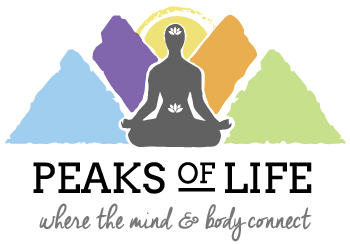I was looking at past journal entries at a time when I was struggling and felt stuck in life. I noticed how at the beginning of many of those entries I would write about how I may be hiding from my emotions – from how I was really feeling, which at the time was sad, angry, and depressed.
I then noticed how I would quickly start writing about how I just needed to let those thoughts go. How I “should” just shift my thoughts and instead write down what I was grateful for. Many of these entries ended with a gratitude list.
I used to judge my younger self for avoiding her emotions and “should-ing” on herself. However, I realized it was my way of protecting myself from difficult emotions. I can see that I was not ready to fully let them in and feel them.
At the time, refocusing my thoughts on what I was grateful for helped me not slip down into deeper sadness, anger, and depression.
I found that as I healed and moved through the difficult emotions, my journal entries felt different. There was more variety in what I was grateful for – compared to the days when I was stuck and struggling.
In my older entries, the list of things I was grateful for was almost the same each time. I was grateful for my home, food, my job, and decent health.
As I was healing, my gratitude list changed. I was grateful for the cool morning air, my healthy body, afternoon nap, great connections with friends, deep breaths, sunsets, my intuition and so much more.
Robert Emmons, Ph.D., a leading scientific expert on gratitude talks about “fake it til you make it.” He says that on days when you are not feeling particularly grateful you can trigger the emotion. Sometimes forcing yourself to smile or say you are thank you can put you in a more appreciative mood.
That was what I was doing. I was semi-faking gratitude until I was able to actually feel it . . . and it worked. I could tell by my journal entries shifted and changed over time.
How is your relationship with gratitude? Do you have a gratitude practice in your life? Have you been faking it until you make it?
Would you like to strengthen your relationship with gratitude?
The definition of gratitude is a feeling of thankfulness and appreciation for someone (or something) that produces long-lasting positivity.
Gratitude practices include:
- Keep a gratitude journal.
- Meditate on what you are grateful for.
- Let the people in your life know why and how you appreciate them.
- Take deep breaths and be present in the moment and to your surroundings.
Research shows that people who practice gratitude consistently report physical, psychological, and social benefits. Such as stronger immune systems, more outgoing, more optimism, and happiness.
Over the years I have played with different ways to practice gratitude. These days my favorite is to meditate and visualize what I am grateful for.
“Acknowledging the good that you already have in your life is the foundation for all abundance.” Eckart Tolle

